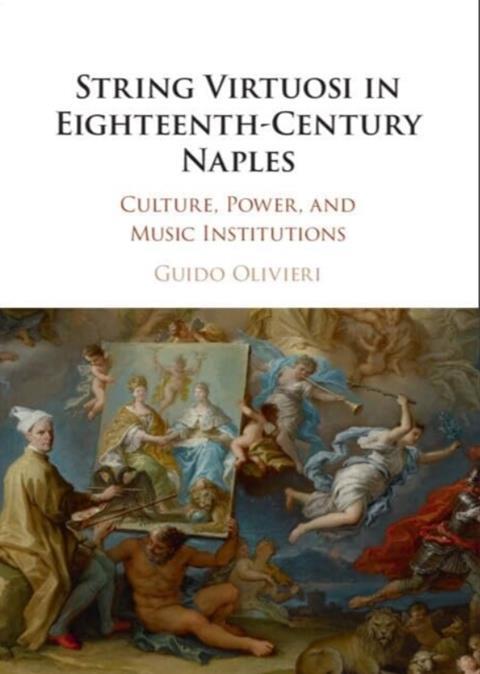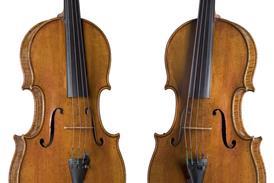Robin Stowell appraises Guido Olivieri’s monograph on the great players of the mid-Italian city during the Enlightenment era

String Virtuosi in Eighteenth-Century Naples: Culture, Power, and Music Institutions
Guido Olivieri
296PP ISBN 9781009273671
Cambridge University Press £85
Guido Olivieri’s monograph breaks new ground by focusing on the instrumental, rather than the operatic activity of early 18th-century musicians in Naples. Well organised, scrupulously documented and fluently written, it comprises seven chapters, an introduction and an epilogue and is equipped with all the requisite scholarly trappings – richly detailed footnotes, pertinent music examples, tables and illustrations, an extensive bibliography and a functional index.
Olivieri examines Naples from historical, social, political, cultural and musical perspectives, confirming that opera was foremost in its musical fare but revealing that, by the 18th century’s dawn, local instrumental traditions were being developed by virtuoso string players such as Carlo Lonati and Nicola Matteis. Personnel and other records discussed in Chapter 1 indicate that these traditions were nurtured by the Cappella Reale, the court ensemble for all official ceremonies, and the gradual expansion of its string section. Especially interesting is Olivieri’s study of the career, sonatas and burgeoning wealth of the Cappella’s leading violinist, Pietro Marchitelli, investigating bank accounts and other documentary evidence.
The subsequent chapter describes the functions and procedures of the four old Neapolitan conservatoires, the true foundations of the city’s musical tradition, and assesses their role in the development of string pedagogy; it also explores the influence and sonatas of violinist Giovanni Cailò. Chapter 3 discusses two neglected manuscripts: the Montecassino Manuscript, which incorporates sonatas by Giovanni Bononcini and Rocco Greco and passacaglias by Gaetano Francone and offers new insights into the early history of the cello repertoire and performing practices such as continuo realisation; and a significant source which contains the earliest extant Italian cello method (c.1740), as well as other works, by Francesco Supriani.
Both manuscripts connect the cello repertoire to the improvisatory practices of ‘partimento’. This chapter also records the emergence of several Neapolitan cello virtuosi during the period, most notably Leonardo Leo and Francesco Alborea. Chapter 4 considers the advent of the Bourbon dynasty (1702) and the resultant infiltration of Neapolitan musicians’ work into other European centres. Despite initial resistance, the extravagant Italian performing style gradually prevailed in Paris, most notably in violin sonatas (1712) by Giovanni Piani.
Book review: Violin Makers in Naples from the 17th Century
Read: The gain in Spain: German makers in Naples
Watch: Naples violin makers: Della Corte, Postiglione and Pistucci
Neapolitans became prominent drivers of concert life in the French capital, as confirmed in Chapter 5 by the enterprise of Marchitelli’s nephew and pupil Michele Mascitti and Cailò’s pupil Giovanni Antonio Guido and their various sonatas composed in a goût réuni. An intensification in cultural and artistic exchange between Naples and Vienna is identified in Chapter 6, with several Neapolitan string players joining the Imperial Chapel around the time when Archduke Charles was made Austrian Emperor (1711) and Piani was appointed Chapel director (1721). New documentation of Francesco Geminiani’s early career as a violinist in Naples’ Teatro de’ Fiorentini is also uncovered. Chapter 7 further emphasises the close cultural and artistic links between the Neapolitan and Viennese courts and focuses on the powerful political influence of musicians such as violinist Angelo Ragazzi. The latter’s Sonate a quattro and Giuseppe Avitrano’s three collections of sonatas are examined, as well as various contrapuntal sonatas for three violins and continuo that gained popularity in Naples during the period.
Olivieri’s thoroughly researched and meticulously prepared volume is an impressive achievement. Although much still remains to be investigated about Neapolitan music making during this period, his magnum opus represents a significant contribution to our knowledge and understanding of not only the importance of instrumental music to the culture of early 18th-century Naples in times of political and social change but also its wider European impact. As such, it serves as an ideal prequel to Anthony DelDonna’s Instrumental Music in Late Eighteenth-Century Naples: Politics, Patronage and Artistic Culture.
ROBIN STOWELL


































No comments yet